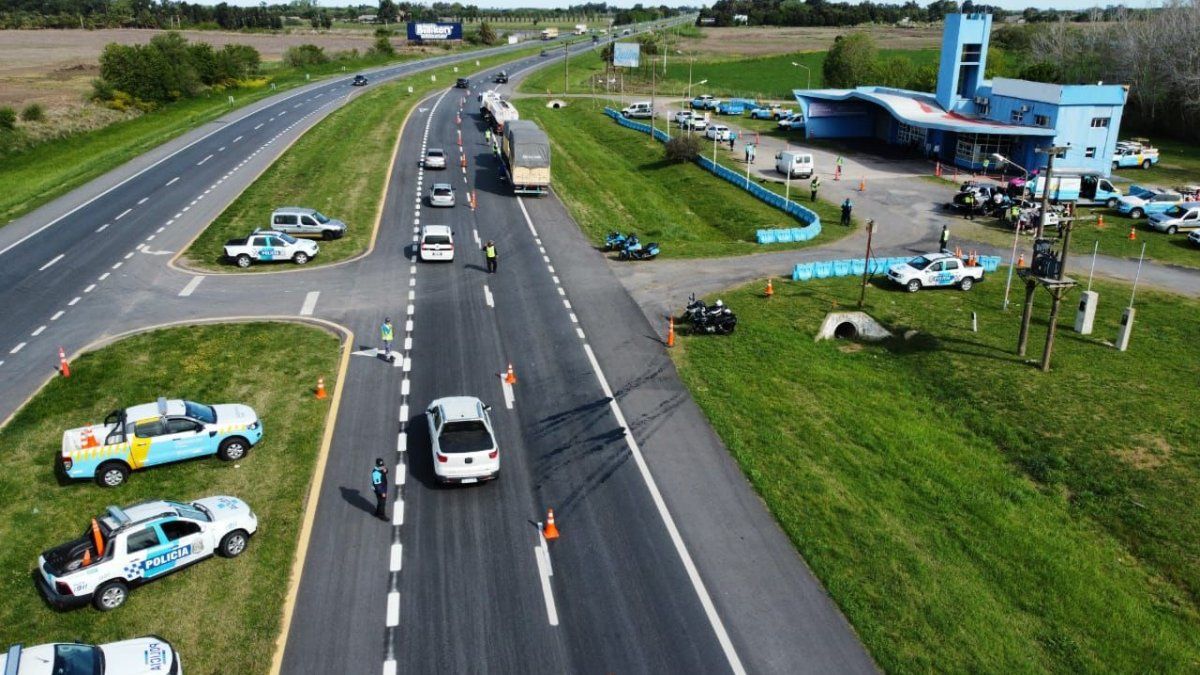More than 50 preventive controls are estimated at seven inspection points distributed along the main routes. It will be under fixed and random modalities.
The National Road Safety Agency (ANSV) reinforced preventive controls on the way to Atlantic Coastwithin the framework of the November long weekend. There will be 53 comprehensive operations until Tuesday the 19th and they include breathalyzer tests and “anti-banking” procedures.
The content you want to access is exclusive to subscribers.
On the last long weekend of the year, the inspection points will be distributed in the Buenos Aires – La Plata highway, RP 2, RP 11, Toll Dock Sud, Quilmes, Villa Gesell and Pinamar. These operations will be coordinated between the national, provincial and municipal governments.


Highway control on the last XL weekend of the year
The main objective is to ensure the “safe circulation of those heading towards the Atlantic Coast, in addition to reduce the rate of road accidents throughout the country,” indicated the ANSV.
The various controls will be carried out by agents from the different bases of the organization and will be carried out under fixed and random modalities. The permanent posts will carry out a total of 29 comprehensive documentation and breathalyzer checks.
Furthermore, there will be 24 random patrol teams whose purpose will be to deter the presence of “banquineros” and offer route assistance to drivers who face any inconvenience during their journey.
path(1).jpg

There will be 24 random patrol teams to deter the presence of “banquineros.”
Photo: Clarín
What documentation do I need to travel the route?
To avoid violations, it is recommended to have the following documents and security elements in order on hand:
- National Identity Document (DNI).
- National Driver’s License.
- Green card (or blue card in force and authorized by the holder).
- Proof of current insurance.
- Proof of Mandatory Technical Review (RTO) or Vehicle Technical Verification (VTV)
- Patents placed visible, without alterations and in good condition.
- Fire extinguishers with current date and triangular beacons.
How to travel with pets
The ANSV presented a series of tips for the transfer of pets in vehicles:
- Animals must always travel restrained, never loose, or in the front. Pets must travel in the back of the car and with harnesses (straps that can be attached to the seat belt).
- On long trips, it is advisable to stop every two hours so that pets can hydrate and walk for a while.
- Before embarking on the trip, consult with a veterinary professional to take the necessary precautions and avoid distractions for the driver.
Source: Ambito
David William is a talented author who has made a name for himself in the world of writing. He is a professional author who writes on a wide range of topics, from general interest to opinion news. David is currently working as a writer at 24 hours worlds where he brings his unique perspective and in-depth research to his articles, making them both informative and engaging.




